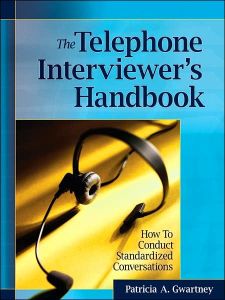Join getAbstract to access the summary!

Join getAbstract to access the summary!
Patricia A. Gwartney
The Telephone Interviewer's Handbook
How to Conduct Standardized Conversations
Jossey-Bass, 2007
What's inside?
Telephone interviewing is both an art and a science. It’s time to put on your lab coat and get out your paintbrushes.
Recommendation
Being a telephone survey interviewer is tough, but the work is necessary. Many organizations use research data to gauge public opinion and make strategic decisions. However, people may resent calls that intrude into their private time at home, so they can react negatively when telephone interviewers call. Luckily sociologist Patricia A. Gwartney is here to help. This comprehensive guidebook compiles her findings from more than 30 years of experience as a survey analyst. She elaborates on how to conduct telephone surveys that get results and provides templates for tricky situations. Gwartney’s technical guide leaves no stone unturned. It fully explains even the most straightforward concepts in great detail with the aid of numerous tables (sometimes, too numerous for smooth reading). getAbstract recommends Gwartney’s essential manual to telephone interviewers and those who train them. This comprehensive handbook covers the field of telephone interviewing from Aabbott to Zymroz.
Summary
About the Author
Patricia A. Gwartney teaches sociology at the University of Oregon, where she is associate head of the sociology department. She was the founding director of the University of Oregon Survey Research Laboratory (OSRL).
















Comment on this summary